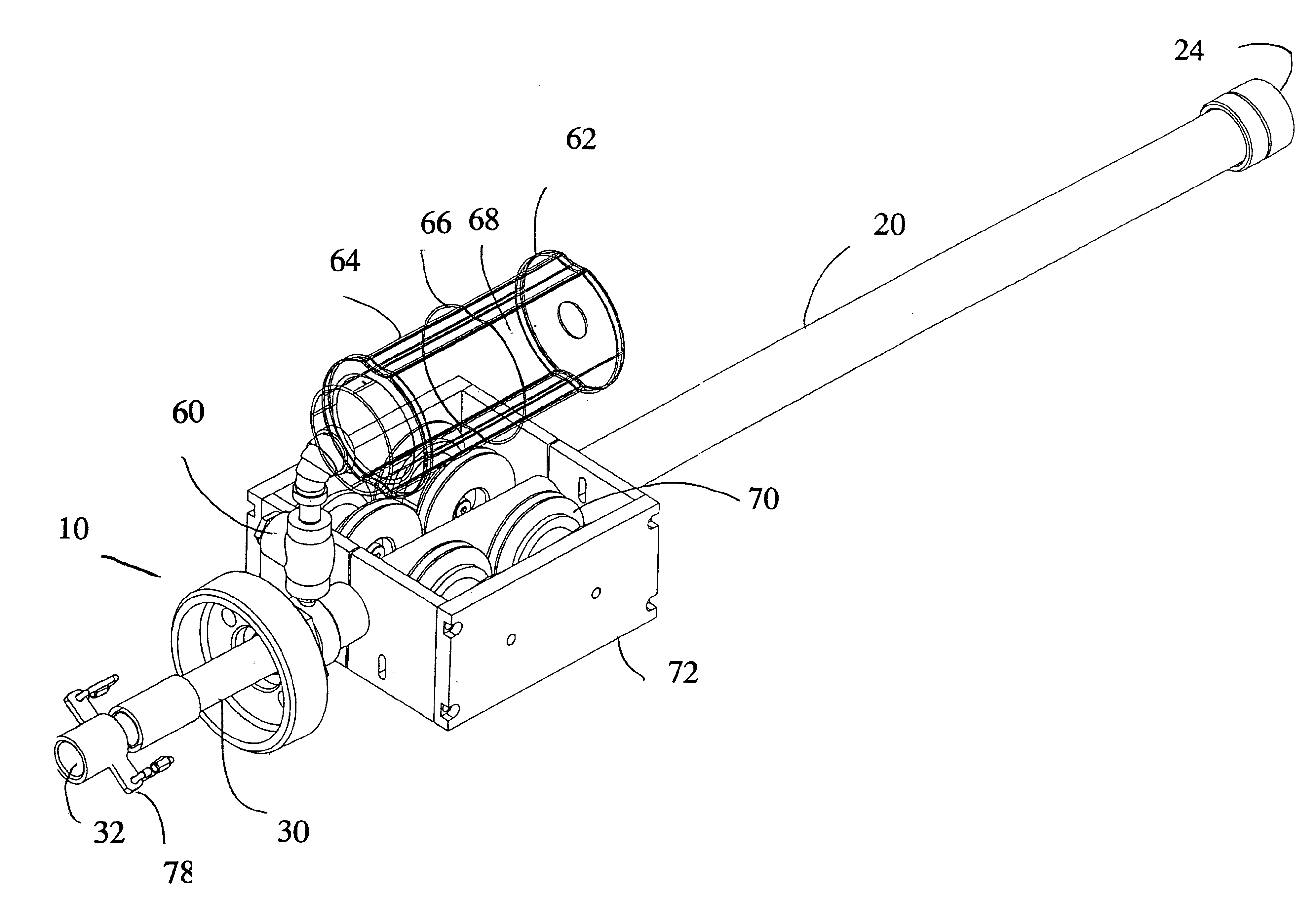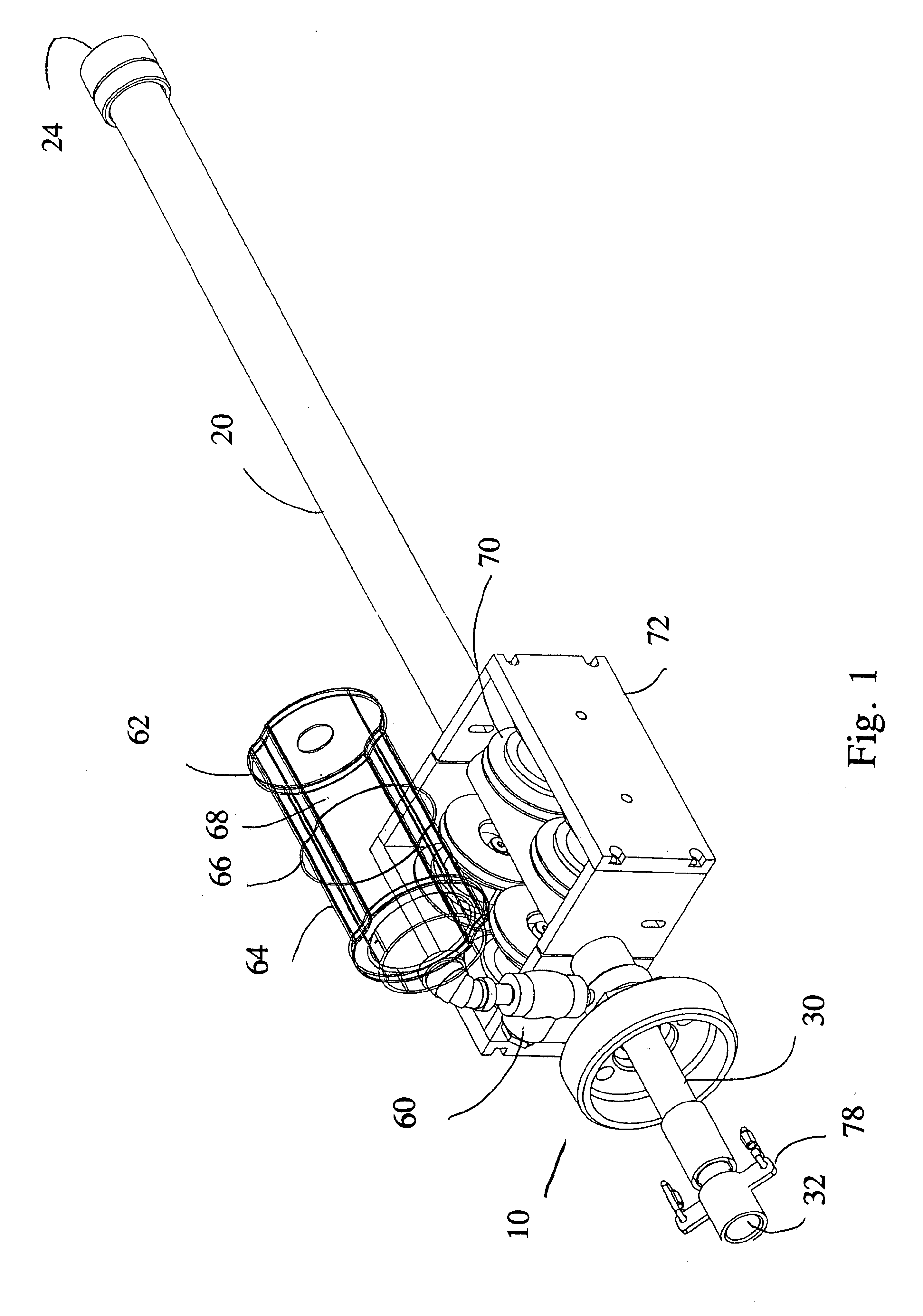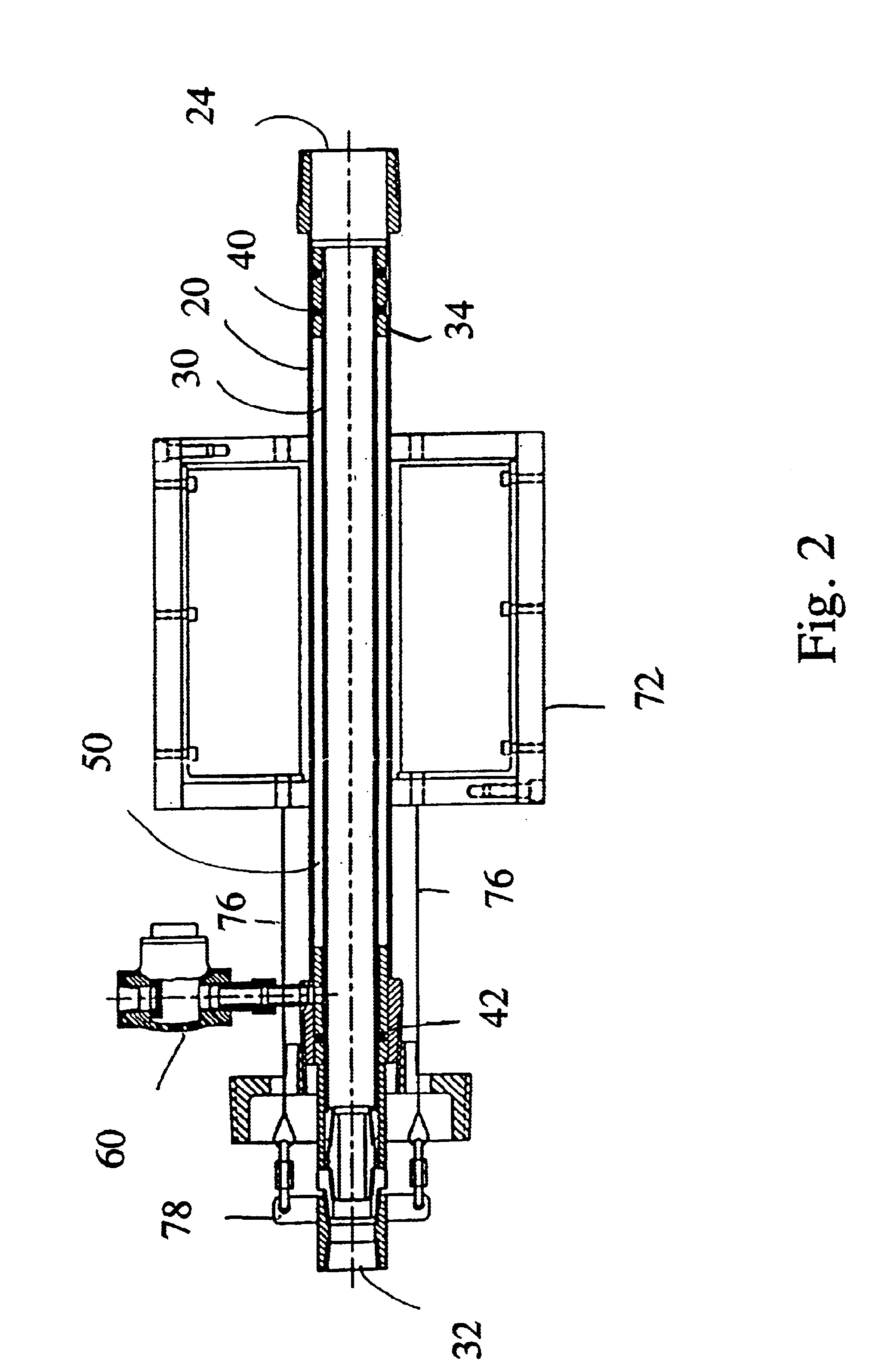Retractable telescoping fire sprinkler
- Summary
- Abstract
- Description
- Claims
- Application Information
AI Technical Summary
Problems solved by technology
Method used
Image
Examples
Embodiment Construction
retractable telescoping sprinkler is disclosed. While the sprinkler can be used in any system, the retractable telescoping sprinkler is advantageously used in a dry, preacting sprinkler system. In such a system, the sprinklers are not under pressure, or may be under reduced pressure. In operation, a control systems responding to a sensor detects a condition that requires that the sprinklers be pressurized opens a valve to allow fire extinguishing media--to flow into the sprinklers. Alternatively, if the system has been maintained at some pressure, a sprinkler head may be activated and the control system will deploy the sprinklers in response to the pressure drop. In some cases, the sprinkler heads are open, and fire-extinguishing media can flow from the open heads when the control valve is opened. In other systems, each sprinkler is closed with a thermally sensitive valve. In such a case, the control system will supply fire-extinguishing medium to the sprinkler head under pressure a...
PUM
 Login to View More
Login to View More Abstract
Description
Claims
Application Information
 Login to View More
Login to View More - R&D
- Intellectual Property
- Life Sciences
- Materials
- Tech Scout
- Unparalleled Data Quality
- Higher Quality Content
- 60% Fewer Hallucinations
Browse by: Latest US Patents, China's latest patents, Technical Efficacy Thesaurus, Application Domain, Technology Topic, Popular Technical Reports.
© 2025 PatSnap. All rights reserved.Legal|Privacy policy|Modern Slavery Act Transparency Statement|Sitemap|About US| Contact US: help@patsnap.com



